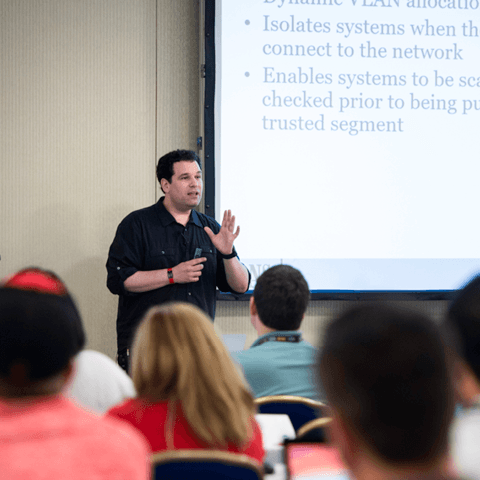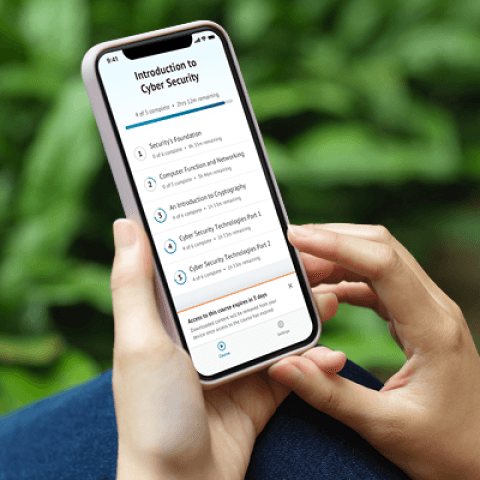SEC595: Applied Data Science and AI/Machine Learning for Cybersecurity Professionals


Experience SANS training through course previews.
Learn MoreLet us help.
Contact usBecome a member for instant access to our free resources.
Sign UpWe're here to help.
Contact UsApply your credits to renew your certifications
Attend a live, instructor-led class at a location near you
Course material is geared for cyber security professionals with hands-on experience
Apply what you learn with hands-on exercises and labs
Develop comprehensive defenses in industrial control systems, and master methodologies through hands-on exercises in a simulated operational technology environment with real-world components.
Excellent course, would definitely recommend to my team and others wanting a more in-depth experience with ICS. The examples provided during class are really what made this so special.
Securing Operational Technology (OT) vs. IT environments requires a different perspective and approach. Each OT system is uniquely engineered to an organization's operational needs, so how should we go about securing these systems?
Through our immersive operations environment, ICS612 will take you from theory to practice over this five-day ICS security training course. You will learn to identify operational vulnerabilities and build defenses in the roles of engineering, operations, and red and blue teams. You will navigate from PLC and HMI operations to the complexities of advanced IT and OT security architecture and monitoring, understanding how threat actors attack operations through ICS systems and personnel. You will reinforce these skills in hands-on lab exercises and conclude with an incident response scenario investigating and recovering classroom operations.
Emerge with a thorough understanding of how to analyze an unknown system to secure and maintain operational resilience.


SANS Fellow Tim Conway, co-author of ICS456, ICS310, and ICS612, blends decades of hands-on ICS/OT security and compliance expertise with ongoing frontline consulting, helping students turn complex industrial challenges into practical skills.
Read more about Tim Conway

Jason Dely brings over 20 years of experience and a diverse industrial control system background to SANS and the industrial control system (ICS) community.
Read more about Jason Dely

Christopher, Principal Consultant at Applied Risk/DNV, specializes in ICS red team activities. He holds multiple security certifications and brings a wealth of practical experience to the classroom environment.
Read more about Christopher Robinson

Jeff is a Subject Matter Expert (SME) for the Global Industrial Cyber Security Professional (GICSP) certification and is an instructor for the ICS612: ICS Cybersecurity In-Depth course.
Read more about Jeffrey ShearerExplore the course syllabus below to view the full range of topics covered in ICS612: ICS Cybersecurity In-Depth.
This section aligns students to the baseline fundamentals of industrial control systems, focusing on local process control components, such as Programmable Logic Controllers (PLCs) and Human Machine Interfaces (HMIs).
This section explores how multiple control systems interact in a larger industrial environment and the security implications. Students will understand peer-to-peer communications in ICS, Supervisory Control and Data Acquisition (SCADA) systems, and Open Platform Communications (OPC).
This section focuses on designing and implementing secure network architecture for industrial control systems. Students will understand and practice the deployment of common IT network technology in ICS.
This section addresses the ongoing management and monitoring of industrial control systems to maintain security. Students will understand and practice ICS system monitoring and logging, asset management, and asset validation.
This final section tests students' skills through a NetWars-style comprehensive incident response scenario in the classroom ICS environment.
This expert applies new threat intelligence against existing evidence to identify attackers that have slipped through real-time detection mechanisms. The practice of threat hunting requires several skill sets, including threat intelligence, system and network forensics, and investigative development processes. This role transitions incident response from a purely reactive investigative process to a proactive one, uncovering adversaries or their footprints based on developing intelligence.
Explore learning pathTests, programs, troubleshoots, and oversees changes of existing processes or implements new engineering processes through the deployment and operations of engineering systems and automation devices.
Explore learning pathEnsures control system network security compliance and best practices for control networks.
Explore learning pathThis role conducts cybersecurity tasks for Industrial Control Systems and Operational Technologies (ICS/OT). Find the SANS courses that map to the Industrial Control Systems and Operational Technologies SCyWF Work Role.
Explore learning pathDiscovers system vulnerabilities and works with asset owners and operators to mitigate discoveries and prevent exploitation from adversaries.
Explore learning pathExecutes specific industrial incident response for incidents that threaten or impact control system networks and assets, while maintaining the safety and reliability of operations.
Explore learning pathAcquires and manages resources, supports, and performs key industrial security protection while adhering to safety and engineering goals.
Explore learning pathCourse content was great. I really enjoyed the hands-on experience with the large amount of labs offered.
I loved that this course was lab heavy. I feel 100% more comfortable around OT equipment now. That’s saying a lot since my background and experience has been strictly IT.

Get feedback from the world’s best cybersecurity experts and instructors

Choose how you want to learn - online, on demand, or at our live in-person training events

Get access to our range of industry-leading courses and resources